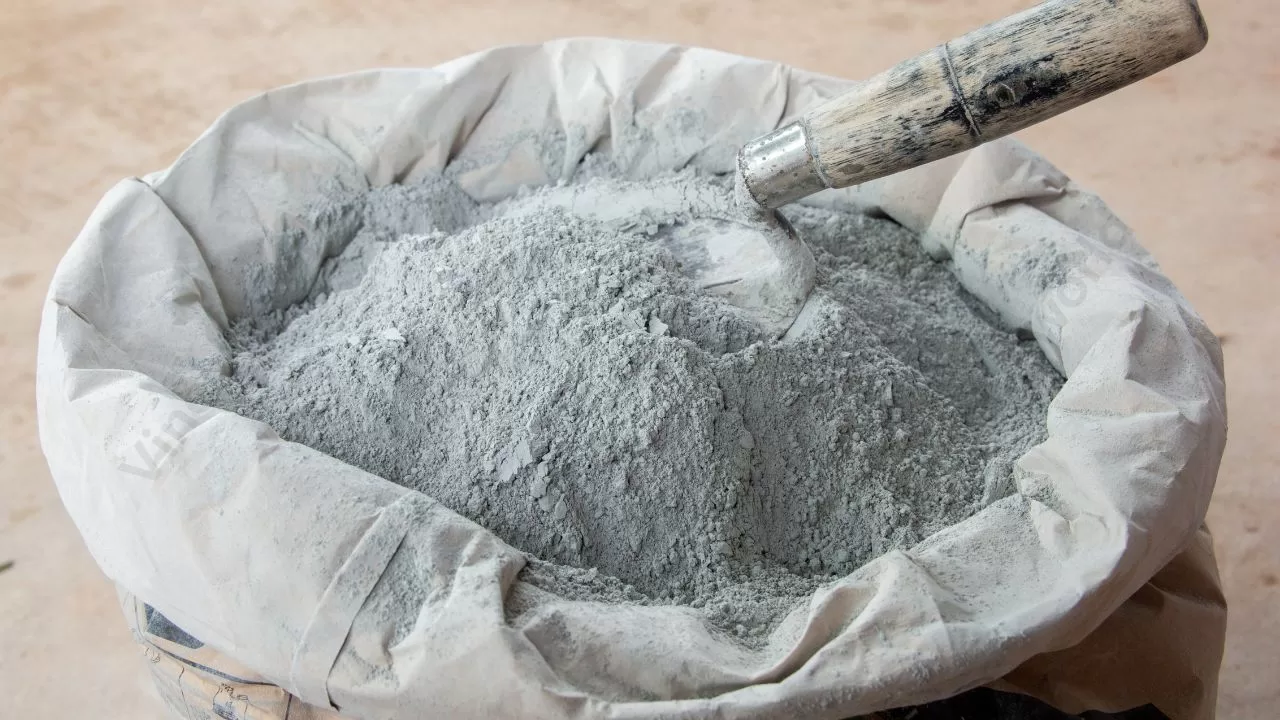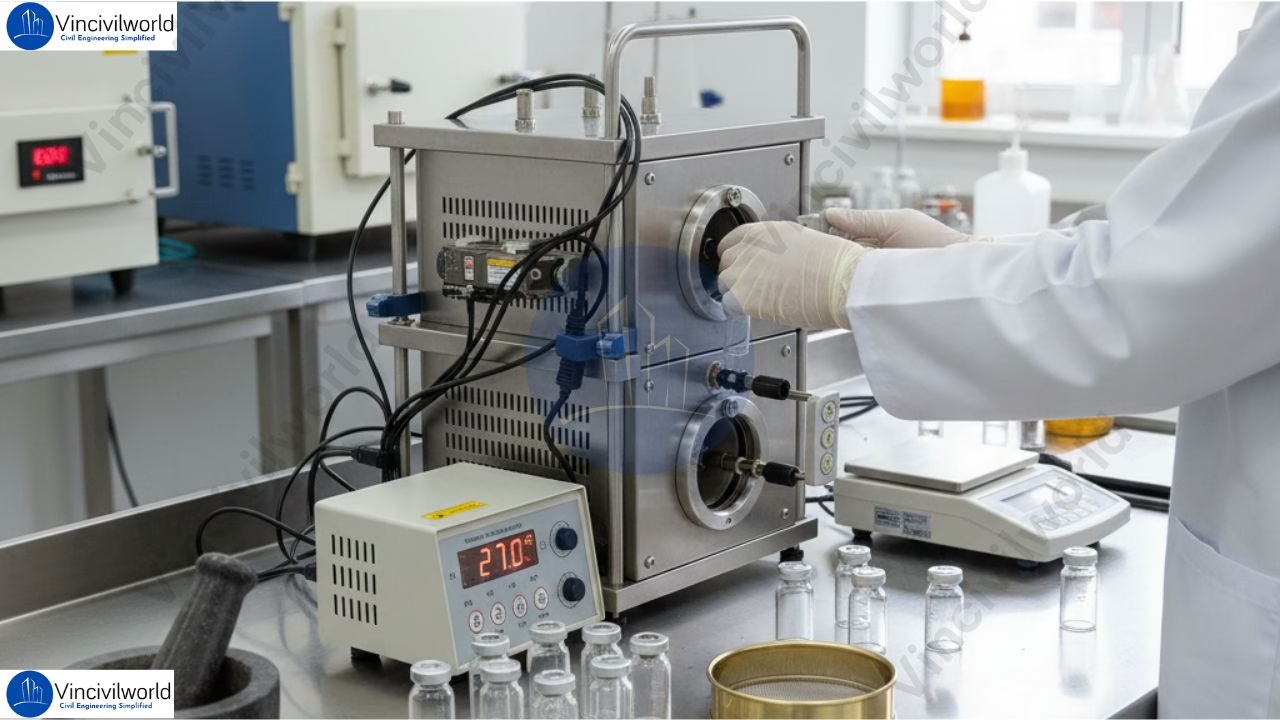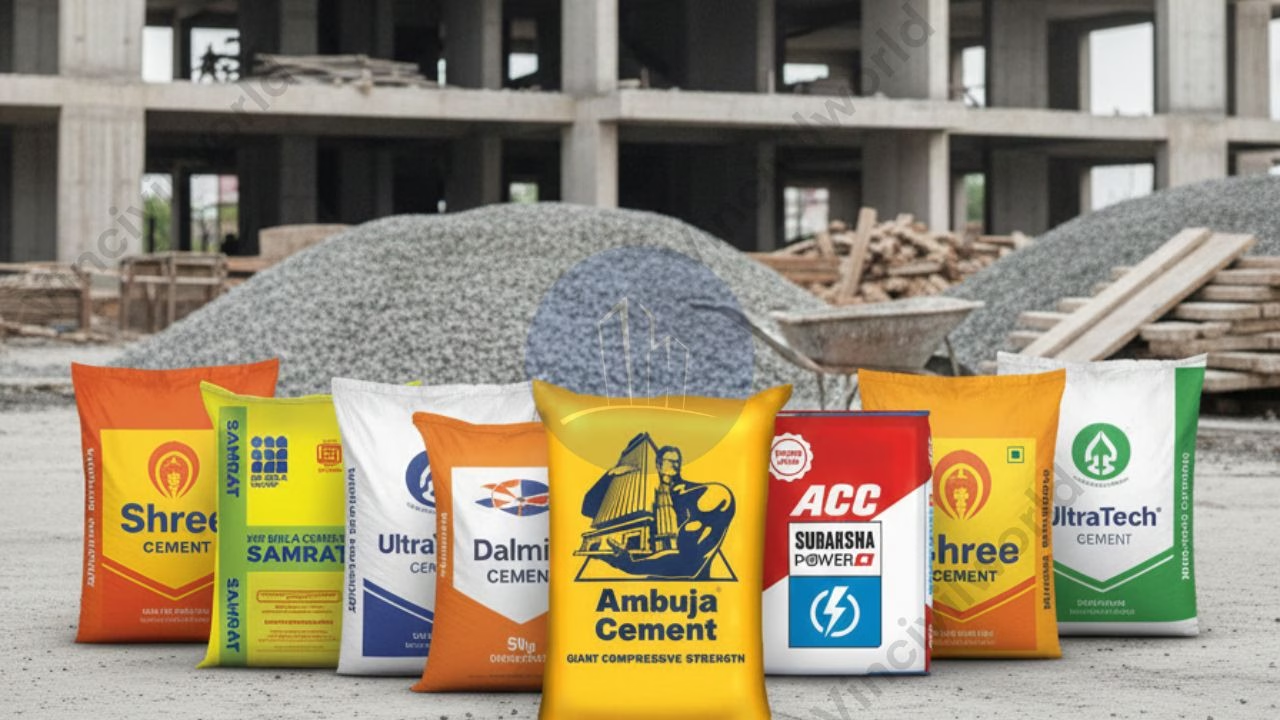Physical properties of cement determine its performance, durability, and suitability for construction. These Key physical properties of cement, such as fineness, setting time, soundness, strength, and consistency—play a vital role in every stage of a project, from mixing to final strength development. Engineers and builders closely evaluate these characteristics to ensure the cement meets specific standards and performs reliably under different conditions. Understanding physical properties helps in selecting the right type of cement for various applications, optimizing workability, and predicting the longevity of concrete structures. In this article, we delve into the key physical and chemical properties of cement, explore their significance in construction, and highlight the essential tests used to assess cement quality for safe and lasting building solution.
The physical properties of cement have a significant impact on a structure’s serviceability, strength, and durability. The most important and highly recognized structural material used in construction is cement. All types of construction, from large skyscrapers, bridges, and tunnels to modest residential structures, use cement. It stands out as a crucial component of industrial buildings such as power plants, refineries, steel plants, cement mills, bridges, and other infrastructure.
Table of contents
Why are the physical and chemical properties of cement important?
Cement, when mixed with sand and aggregates, forms concrete, and when combined with sand alone, it results in mortar. The serviceability, strength, and durability of any structure rely significantly on the quality of cement used in both concrete and mortar. The various physical properties of cement such as setting time, strength, fineness, and soundness are crucial determinants of construction performance. These properties are directly influenced by the cement manufacturing process, which includes the precise proportioning of ingredients, thorough grinding, packaging, and proper storage of cement. Maintaining high standards throughout manufacturing ensures the cement possesses optimum properties that contribute to long-lasting, reliable, and safe concrete and mortar in construction projects.
The cement properties are classified into Physical and chemical properties of cement.
Physical Properties of Cement
The physical properties of cement are critical in ensuring cement quality. Let us explore the physical properties of cement in depth. Physical properties distinguish different cement blends used in construction. Some critical parameters influence cement quality. Good cement has the following physical properties and is based on the following factors.

- Fineness of Cement
- Soundness of cement
- Consistency of cement
- Strength of cement
- Setting time of Cement
- Hydration reaction of cement
The fineness of cement – Physical properties of cement
The Fineness of cement is the measure of the particles of cement or the specific surface area of cement. The hydration rate of cement is directly related to its fineness. The higher the fineness of cement higher the specific surface area available per unit volume of cement. ie More area is available for cement and water action (hydration). This increases the rate of hydration and early gaining of strength in concrete. We can reduce bleeding in concrete by increasing the fineness of the cement. However, when we make the cement finer, we may cause dry shrinkage. We can manage this shrinkage by adding more water to the mix.
You can determine fineness using a sieve analysis test, air permeability test, or sedimentation method
The soundness of cement – Physical Properties of Cement
Soundness refers to the ability of hardened cement paste not to shrink or expand and retains its volume.If the volume changes, cracks may develop and we can distinguish the cement as unsound. Unsound cement can affect the durability and life of the structure. Soundness can also be defined as the volume stability of cement.
The cement manufacturing quality also has a very serious impact on cement quality. Inadequate heating can leave excess lime in cement. Even though quality labs in cement plants thoroughly check the ingredients, we still have to check cement for its soundness before using it in any structure. We use the Le Chatelier apparatus to test the soundness of cement.
Causes of Unsoundness of cement
The soundness of cement is affected by the presence of excess lime and magnesia. The excess lime hydrates very slowly to form slaked lime and will affect the properties of cement. The hydration difference between free lime (CaO) and slaked lime can change the volume of concrete on hardening and these changes make cement unsound.
Excess magnesia also reacts with water and affects the hydration process making cement unsound.
Gypsum is added to control the setting time of cement. Excess gypsum can react with Tricalcium aluminate to form calcium sulphoaluminate which can expand the concrete while hardening. The addition of gypsum has to be done with utmost care or else can make the cement unsound.
Consistency of cement
The consistency of cement is the ability of cement-water paste to flow under normal conditions. The optimum water-cement ratio has to be maintained in dry mixes to make it workable. Consistency of cement is the measure of the optimum water-cement ratio of a cement paste which can allow a Vicat apparatus plunger to penetrate a depth of 5-7 mm measured from the bottom of the mould. In that case, we can consider the paste is at normal consistency. The optimum water percentage for normal consistency ranges from 26% – 33%. The standard consistency test is conducted using a Vicat apparatus.
Strength of cement
Cement is the material responsible for imparting strength to mortar and concrete. The cement hydrates react with water and induce strength in concrete. We have to check the strength of cement before using it for work. Many factors, such as the water-to-cement ratio, ingredient proportioning, curing conditions, and age, can affect its strength. We check the cement for compressive, tensile, and flexural strength. Manufacturers indicate these strengths as grades on the cement bags.
The strength is determined by checking the compressive strength of the cement.
Setting time of cement
The setting time of cement starts when water is added to the cement. It continues to the point where the cement reacts with water and the paste hardens. This period covers the time from production to hardening. It involves activities like mixing, conveying, placing, and hardening. The setting time depends on a lot of factors. These include the fineness of cement, water-cement ratio, chemical content, and the presence of admixtures. The setting time needs to be adjusted according to the structural requirements. It must ensure that the initial settling time is not too low. Additionally, the final setting time should not be too high.
The initial setting time is when the mix starts to stiffen and attains its plasticity. The initial setting time is 30 minutes for cement.
The final setting time is when the cement hardens to a point where it can take loads. The final setting time is 10 hours.
Hydration of cement
For using cement in any construction work, it is necessary to mix cement with water. On mixing water with the cement, a chemical reaction happens between water and cement leading to heat generation. This process of heat generation is known as the heat of hydration. It is very critical in mass concrete work and works done in hot and humid conditions.
Adding water to cement causes the cement and water to chemically react—a process called hydration. Hydration generates heat, which can control the quality of the cement and helps in maintaining curing temperature in cold conditions. When used in mass concrete, heat generation tends to be very high. This can cause undesired stresses in the structure. C3S and C3A in cement mostly influence the heat of hydration. The water-cement ratio, fineness, and curing temperature also affect it. To calculate the heat of hydration for Portland cement, we find the difference between the dry cement and the partially hydrated cement.

Key Takeaways
- Key physical properties of cement—such as fineness, setting time, soundness, consistency, and strength—directly impact concrete’s performance, durability, and workability.
- Fineness of cement controls the rate of hydration, early strength gain, and bleeding in concrete.
- Soundness of cement ensures volume stability, preventing cracks and structural failures.
- Consistency of cement relates to optimum water-cement ratio for good workability and determines appropriate mixing.
- Cement strength (compressive, tensile, flexural) must be checked before use, as it’s fundamental for structural integrity.
- Setting time of cement guides work timing; initial setting should not be too short, nor final setting too long, to meet construction requirements.
- Cement composition and curing conditions critically affect the heat of hydration during the hydration process in mass concrete.
- Regular testing like sieve analysis, Le Chatelier apparatus, and Vicat apparatus is essential for quality control.
- Understanding these properties helps in selecting the right cement type, optimizing construction processes, and predicting concrete longevity.
Conclusion
To achieve durable, strong, and reliable concrete structures, engineers, architects, and builders need to understand the key physical and chemical properties of cement. Properties such as fineness, soundness, and consistency are crucial. Strength, setting time, and the heat of hydration also play a vital role at every stage of construction, from mixing to final curing. Proper testing—using methods like sieve analysis, Le Chatelier, and Vicat apparatus—ensures cement meets required quality standards, which directly influences structural performance and safety. By carefully analyzing and controlling these key physical parameters, professionals can prevent common issues such as cracking, shrinkage, and poor durability. Ultimately, selecting the right type of cement based on its physical characteristics optimizes workability, enhances longevity, and assures a superior building solution for any project.







7 thoughts on “Physical Properties of Cement – Significance and impacts”
Comments are closed.